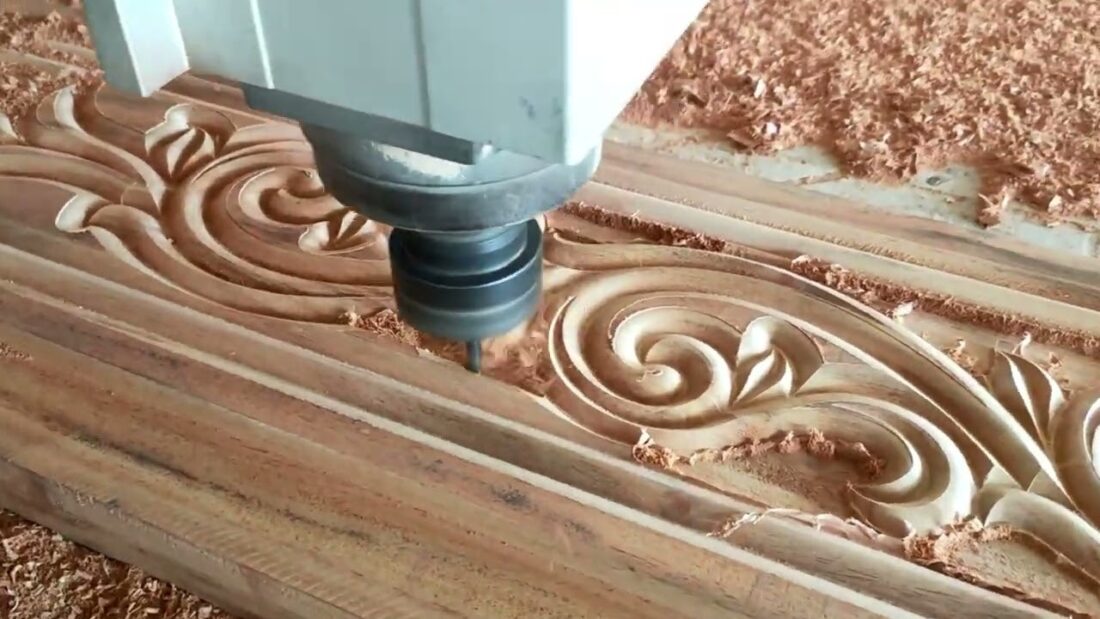Revolutionizing Your Creations: Custom CNC Parts
Transforming your innovative ideas into tangible, intricate custom CNC (Computer Numerical Control) parts is akin to a sculptor turning a mere stone into a masterpiece. This journey from concept to creation encapsulates not only the technical prowess but also the artistic finesse that CNC machining offers.
The Essence of CNC Machining: A Gateway to Customization
CNC machining represents the pinnacle of customization in modern manufacturing. At its core, this process involves the transformation of digital designs into physical, tangible components. This is achieved through a sophisticated system where computer-generated designs guide machinery to sculpt materials with extraordinary accuracy and detail. The precision of CNC machining is akin to an artist translating their vision onto canvas, where each brush stroke is deliberate and precise. This method allows for the creation of parts that are not only functionally robust but also aesthetically pleasing, marrying the realms of industrial utility and artistic elegance.
Key Aspects of CNC Machining:
- High Precision: Ability to produce parts with tight tolerances and exact specifications;
- Versatility: Suitable for a wide range of materials, from metals to plastics;
- Complexity: Capable of producing intricate and detailed parts;
- Repeatability: Ensures consistency across multiple production runs.
Designing for CNC: Melding Art with Mechanics
In the realm of CNC machining, the design phase is where creativity confronts the physical and mechanical limitations of manufacturing. Designers and engineers must work in tandem, balancing imaginative concepts with the practicalities of machine capabilities. Understanding the intricacies of CNC machinery, from its operational limits to its potential, is vital. This knowledge ensures that the designs are not only innovative but also executable, marrying the artistic vision with mechanical feasibility.
Considerations in CNC Design:
- Structural Integrity: Ensuring the design is robust and can withstand intended use;
- Material Compatibility: Matching the design with the right material for optimal performance;
- Machining Limitations: Acknowledging the capabilities and limits of CNC machinery.
Materials Matter: Choosing the Right Canvas
Just as an artist selects a canvas that best suits their medium, in CNC machining, the choice of material is crucial. Each material, be it aluminum, steel, or titanium, brings unique properties to the table. These materials vary in strength, durability, weight, and aesthetic appeal, affecting both the performance and appearance of the final product. The choice of material often determines the success of the finished part, making it an essential step in the CNC process.
Common CNC Materials:
- Aluminum: Lightweight, corrosion-resistant, ideal for aeronautics;
- Steel: High strength, durable, perfect for automotive parts;
- Titanium: Exceptional strength-to-weight ratio, used in medical devices.
The Precision of CNC Tools: Sculpting Your Dreams
In CNC machining, tools play the same critical role as an artist’s brushes. Each tool, whether it’s for drilling, milling, or turning, offers a unique approach to material removal, contributing to the final shape and texture of the part. These tools are selected based on the complexity of the design and the material being used, ensuring that each cut, groove, or engraving is executed with the highest precision.
Types of CNC Tools:
- Drills: For creating holes and cylindrical features;
- End Mills: For cutting and shaping surfaces;
- Lathes: For producing symmetrical, cylindrical parts.

Complex Parts Made Simple: The Magic of CNC Technology
CNC technology shines in its ability to simplify the production of complex parts. What might seem daunting or even impossible to create manually becomes feasible with CNC machining. This process allows for the creation of parts with intricate geometries and detailed features, reminiscent of a magician skillfully executing a complex illusion. This capability is particularly invaluable in industries where complexity and precision are non-negotiable, such as aerospace and medical technology.
The Role of CAD in CNC Machining: Digital Artistry
In CNC machining, Computer-Aided Design (CAD) software functions as the artist’s palette, offering a diverse array of tools to bring ideas to life. CAD allows designers to create detailed and intricate designs that can be precisely translated into physical parts by CNC machines. This digital artistry is integral to modern manufacturing, allowing for a level of design complexity that was previously unattainable.
Automotive Design and Fabrication: Engineering Precision with CNC
The realm of automotive design and fabrication is a testament to the versatility and precision of CNC machining. In this industry, every component, from the smallest bracket to the most complex engine part, demands exactitude and durability, attributes that CNC technology can readily prove. The integration of CNC machining in automotive design has revolutionized how vehicles are built and has opened new avenues for innovation and efficiency in vehicle manufacturing.
Key Contributions of CNC in Automotive Fabrication
- Complex Component Manufacturing: CNC machines excel in creating complex parts like engine components, suspension parts, and intricate gearboxes. These parts require the utmost precision to ensure optimal performance and safety;
- Customization and Prototyping: For custom automotive builds or prototyping new designs, CNC machining is invaluable. It allows for rapid production of parts, testing, and modification, speeding up the development process;
- Material Versatility: The automotive industry utilizes a wide range of materials, from aluminum for lightweight parts to robust steels for structural components. CNC machining can handle this diverse material spectrum with ease;
- Enhanced Aesthetics: Beyond functionality, CNC machining contributes to the aesthetic aspect of automotive parts. It allows for the creation of sleek, precise designs that enhance the visual appeal of vehicles;
- Increased Efficiency and Consistency: In mass production, CNC machining ensures consistent quality across thousands of parts, which is crucial for the automotive industry’s high standards.
Conclusion
The world of custom CNC parts is a fascinating intersection of technology and creativity. It offers a unique opportunity to turn your innovative ideas into precise, high-quality components. The journey from a digital design to a physical part is a testament to the capabilities of modern engineering and the artistic potential it holds.

Leave a Reply